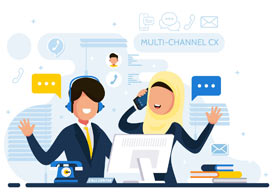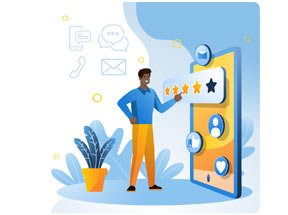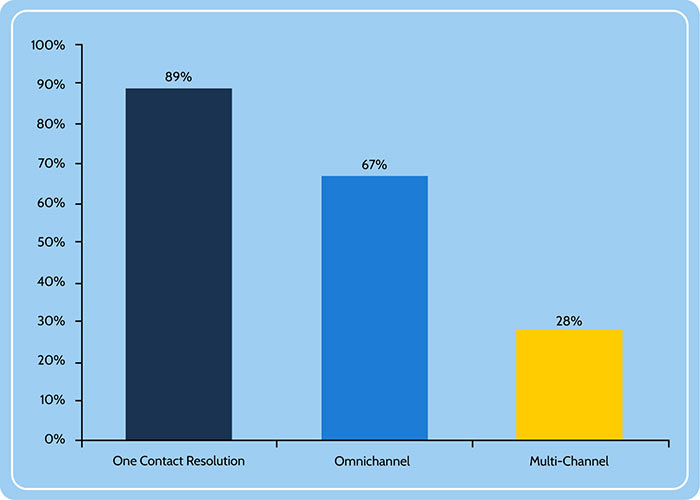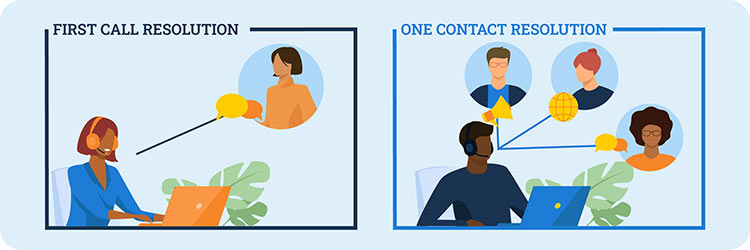Multi-Channel CX
The vast majority of organizations state that they are trying to improve their customer experience (CX) using multi-channels to resolve the same inquiry or problem. However, SQM Group's experience shows that few organizations measure customer satisfaction (Csat) using contact channels (e.g., IVR self-service, mobile self-service, email, and chat).

Also, customers using multiple contact channels to resolve the same inquiry or problem, Csat is seldom measured. Therefore, it is tough to improve when you don’t measure CX using a contact channel/using multi-channels to resolve the same inquiry or problem. However, Call Center and the web self-service channels tend to be measured more frequently than other contact channels.
SQM's contact channel CX research data revealed that 40% of customers used two or more contact channels to resolve the same inquiry or problem. For example, a customer used the web channel while at the same time talking to a call center Agent.
The two most popular contact channels used for resolving an inquiry or problem are the web self-service and call center channels. SQM's research shows that most customers stated that when the web self-service channel fails, they will contact a call center agent to resolve their inquiry or problem.
Multi-Channel Csat
One of the main findings of our contact channel CX research study is the easier it is for a customer to resolve their inquiry or problem, the higher the Csat. That is why the One Contact Resolution (OCR) CX has the highest Csat (89%) by far of all the contact channel experiences (e.g., OCR, omnichannel - seamless, and multi-channel non-seamless) a customer has for resolving an inquiry or problem.

Also, our contact channel research revealed that most customers who start in one contact channel do not like to channel hop to resolve the same inquiry or problem. Instead, if a customer's inquiry or problem is unresolved and they have to contact the organization again, most customers will go back to the initial channel they used. If they choose to use another contact channel, most will use the call center.
Multi-channel Csat continues to be poor for customers trying to resolve the same inquiry or problem. For example, omnichannel seamless Csat is 67%, and multi-channel non-seamless Csat is an alarming 28%, which is by far the lowest of all the contact channel CX. Moreover, the omnichannel and multi-channel low Csat have not changed much in the last five years.
In addition, Omni-channel Csat is at the 3rd quartile contact channel CX performance level for resolving an inquiry or problem. Thus, even though omnichannel is a seamless experience for using two or more contact channels for resolving the same inquiry or problem, Csat is still mediocre.
The main reason why an omni-channel customer experience is mediocre is that most customers do not wake up in the morning and say they want to use two contact channels to resolve the same inquiry or problem. In other words, what most customers want is a One Contact Resolution for resolving an inquiry or problem. Simply put, one channel and one contact to resolve an inquiry or problem.
Contact Channel CX (Csat Top Box Response)

SQM has developed the following contact channel CX definitions:
Omni-Channel
Defined as a customer who had a seamless experience across all contact channels to resolve the same inquiry or problem. Put differently, when a customer used another channel to resolve the same inquiry or problem, they were able to pick up from where they left off in the previous channel and, as a result, did not have to start from the beginning.
Multi-Channel
Defined as a customer who did not have a seamless experience when using multiple channels to resolve the same inquiry or problem. In other words, the customer had to start their interaction from the beginning each time they used another channel to resolve the same inquiry or problem.
One Contact Resolution
Defined as a customer who resolved their inquiry or problem on the first interaction using one contact channel. Simply put, only one interaction and one contact channel is used.
These findings underscore the importance of measuring OCR for contact channel customer experience.
FCR and OCR Distinction
In short, the distinction between Voice of the Customer (VoC) First Call Resolution (FCR) and One Contact Resolution (OCR) is that FCR considers only the usage in an individual contact channel and OCR factors in the use of multiple contact channels for resolving an inquiry or problem.

